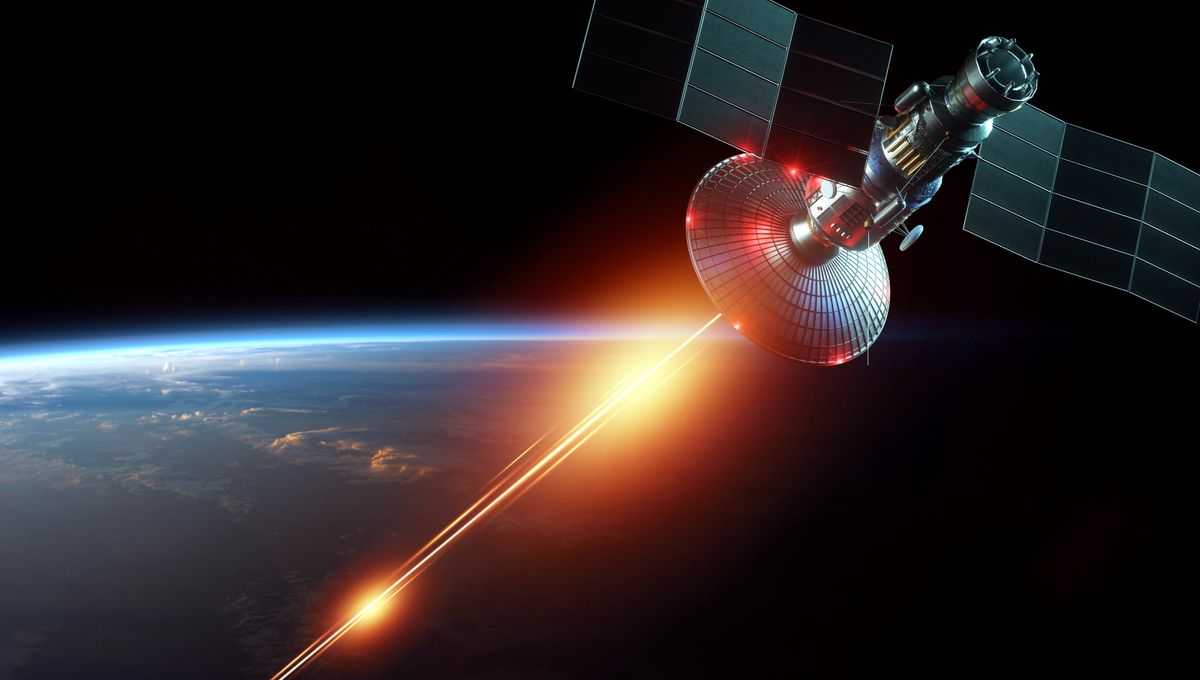
A new application of laser technology known as two-way dual-comb ranging (TWDCR) has demonstrated with unprecedented precision in measuring the distance between instruments more than 100 kilometers (62 miles) apart. Improvements in long-distance ranging could help satellites fly better in formation and enhance the accuracy of scientific instruments for gravitational wave detection and very-long-baseline astronomical interferometry, such as has been used to image black holes.
Lasers use a single frequency of light, so each laser has a specific wavelength, which is known so precisely at one point the length of a meter was defined using a krypton emission line. That means that the number of wavelengths it takes a laser to travel to a location and return gives us the distance extraordinarily accurately. At least, that is the theory.
As the authors of the new research, mostly based at the University of Science and Technology of China, note in the preprint of a their work, which has not yet completed peer review.; “Long-distance ranging remains technically challenging due to high transmission loss and noise.”
Researchers have been trying to address these problems for a long time, and the authors refer to several approaches that have been proposed to try to overcome it, some with demonstrated success.
Nevertheless, they propose that TWDCR can do better still.
The technique relies on Optical Frequency Combs (OFCs). Spectral combs produce light at regularly spaced wavelengths, with no light emitted in between. Their applications saw their inventors win half of the 2005 Nobel Prize for Physics.
Although OFCs are already used for distance measurements, atmospheric disturbance means that, prior to the latest research, dual-comb ranging had never been used over more than a kilometer.
In that context, aiming for this distance was quite a jump.
The authors phase-locked reference planes in labs in Nanshan and Gaoyazi to local clocks, rather than syncing both to a common clock. The rest of the OFC ranging system was restructured around this, while still relying on interference between light bounced off objects to measure the distance between. Among other things, this setup produces less power loss than existing methods.
Using combs with central wavelengths of 1545 and 1563 nanometers, the lasers were bounced between the sites 113 kilometers (70.2 miles) apart, measuring the distance with a claimed error of just 82 nanometers (0.000003 Inches). This was achieved using 21 seconds of measurements, but even in just over a millisecond the team managed precision of less than the width of a human hair.
For the benefit of any flat Earthers who somehow wandered onto this page, success depended on choosing two high-altitude labs with a valley between to get transmission uninterrupted by the curve of the Earth.
With no other method able to determine the distance between the two sites down to this scale, it’s not possible to be sure the results are correct. Some systematic error could be putting the distance out by meters and making the precision a cover for inaccuracy. However, confirming the technique’s success over shorter distances, where other methods are available, may help ease concerns.
This distance is still shorter than from the ground to satellites. However, with most of the journey to space occurring in a near-total vacuum, upward beams may have to deal with less atmospheric interference than this one.
The authors acknowledge there’s a price to pay for their method’s advantages. TWDCR is harder to set up and the data extraction process more difficult. For shorter measurements, it’s not worth the extra effort – but finding the distance to satellites, for example so precisely they can measure the Earth’s magnetic field, is a different matter.
The prepint is available at ArXiv.org
[H/T New Scientist]
Source Link: New Laser Technique Measures Distance Between Faraway Labs To A Fraction Of Hair’s Width